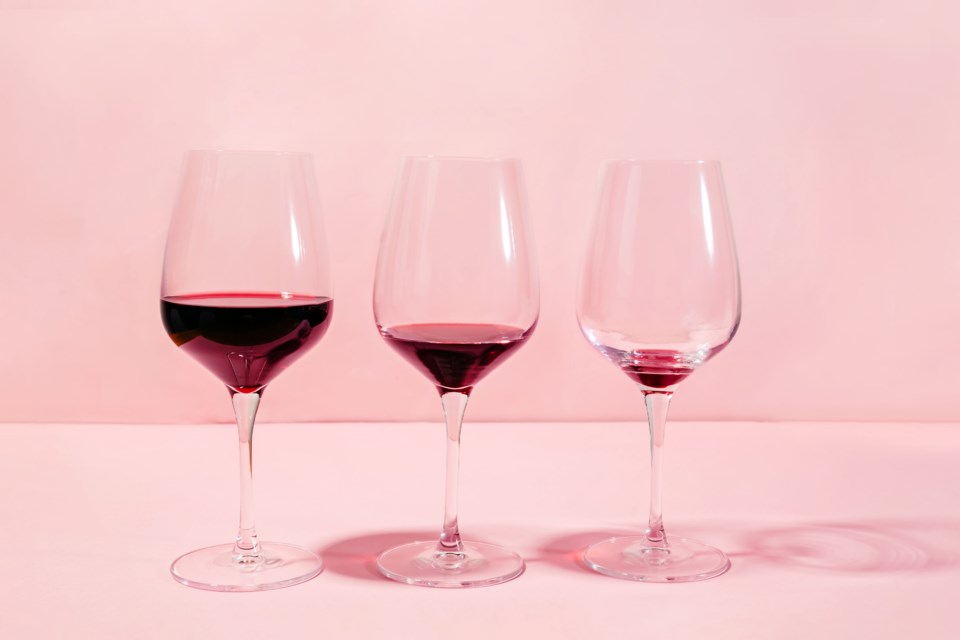I bet you’ve seen those interesting headlines rolling in with this year’s Dry January—the U.S. surgeon general saying that warning labels should be included on alcohol since booze is a leading preventable cause of cancer. And Canadian experts agree.
Pique and I have been beating the empty wine box about the link between alcohol and cancer for a while now, like in news articles and a 2023 column of mine. But since everybody might be getting a little saturated by the post-holiday, drinking-isn’t-great-for-you messaging, I’m going to press pause and link you in next time to some fresh thinking on it—just when you thought it had all dried up and blown away (add winking emoji).
For now, I find the call for warning labels about cancer and alcohol more fascinating than ever. It all takes me back to 2001, when Canada became the first country on Earth to put graphic health warnings about smoking and cancer on cigarette packages. A lot of my friends and family members went, huh? at the time. Now 138 countries are doing it.
Then we Canucks went one step further and led the way again by printing warnings right on cigarettes themselves. Studies indicate that, worldwide, it’s the most cost-effective tool for educating smokers and non-smokers alike. (Think of wee kids seeing it and asking, daddy, what’s that?)
So here’s what I wonder as the calls for cancer warnings on alcohol and that Washington University School of Medicine study on fructose and cancer I noted in my latest column rolled in about the same time. Since the research showed that all fructose—but especially that nasty high-octane, high-fructose corn syrup—is also linked to cancer (our livers convert it to “food” that fuels tumours), are we going to see warning labels on food products containing same? After all, HF corn syrup is so cheap and ubiquitous given corn is the No. 1 U.S. crop and No. 3 in Canada, we see it in almost every processed food, from pop to ketchup and tinned veggies.
But don’t hold your breath. Somehow I doubt that’ll be coming any time soon, even if people lobby for it. Yep, we consumers need to be warned sometimes. And label warnings are more important than ever in our busy, disinformation-verse. But until it happens, we’ll have to rely on our own fact-based research and good sense to probe our eating habits, and more.
Meanwhile, keep reading those labels, folks!
Fresh ways of looking at sweet stuff—and yogurt
I love pancakes, especially this time of year, and if you’re like me (Tom Barratt, I’m thinking of you here), good chance you love them along with a dollop of maple syrup—real maple syrup from Quebec—and maybe some berries, too. Not to say those are bad ideas. (To borrow a meme from somewhere, there isn’t a snowball’s chance in hell I’d give up my real Canadian maple syrup.)
Still, after the recent flood of holiday treats and in light of the above report, you can pretty much count me out when it comes to sweet things lately.
These zucchini pancakes, below, from the excellent John Hopkins Healthy Breakfasts website, are a great example of rethinking old sugar habits. They really hit the spot, with nary a speck of fruit or HF corn syrup in sight. Plus here’s the perfect Greek yogurt tip to top them off, from Whistler’s own Stella Harvey. Founder of the Whistler Writers Festival, she taps into her own Greek roots and family history for her many short stories and novels.
According to Stella, plain Liberté yogurt comes close to true Greek yogurt. It’s up to five per cent fat, but any percentage of fat is good. And if you want to follow what the Greeks do, simply pass it thought a piece of cheesecloth to strain out the liquid whey—that’s how Greek yogurt gets so thick. No extra cream or additives, just lovely yogurt plainly made then strained. (Most Whistler grocery stores carry Liberté, including Nesters, Creekside Market and Whistler Grocery Store. If you can find it, Liberté also makes a nice thick Mediterranean-style yogurt with 10 per cent fat.)
BTW, the story behind Liberté somewhat echoes Stella’s own. She was born in Egypt and was connected to the Middle East before her family emigrated to Canada to flee a vendetta. The name Liberté was inspired by the Statue of Liberty, the first thing the Kaporovsky family saw in 1936 when they emigrated from Eastern Europe. Ashkenazi Jews, they eventually settled in Montreal and started producing some of the best (kosher) dairy products around—including very good yogurt.
As for real maple syrup, most of the “sugars” in it are from glucose. And that phony stuff? Keep away from it with a 10-foot pole. It’s all about artificial flavours and that nasty high-fructose corn syrup. Nary a drop of maple sap in sight.
Easy zucchini pancakes
(From Healthy Breakfasts, John Hopkins Medicine)
2 medium zucchinis
3 tbsp. olive oil
2 eggs
Salt and pepper to taste
Fresh herbs: 4 sprigs of fresh parsley or dill (chopped) OR dry herbs: 1 teaspoon
1 cup all-purpose flour
Sour cream or plain Greek yogurt
Grate zucchini. Place it in a colander in a sink for 10 to 15 minutes to let the liquid drain (like Greek yogurt!). Squeeze out remaining liquid. Heat the oil in a large skillet over medium heat. In a large bowl, whisk eggs, salt and pepper, and herbs. Add flour, the zucchini and mix. Drop 1/4-cup portions of the mixture onto the heated skillet, and spread it into pancakes, leaving space in between. Fry until golden brown, about 3 to 4 minutes each side. Serve warm with sour cream or plain Greek yogurt. Delicious.
Glenda Bartosh is an award-winning journalist who’s having another look at even regular old fructose.




